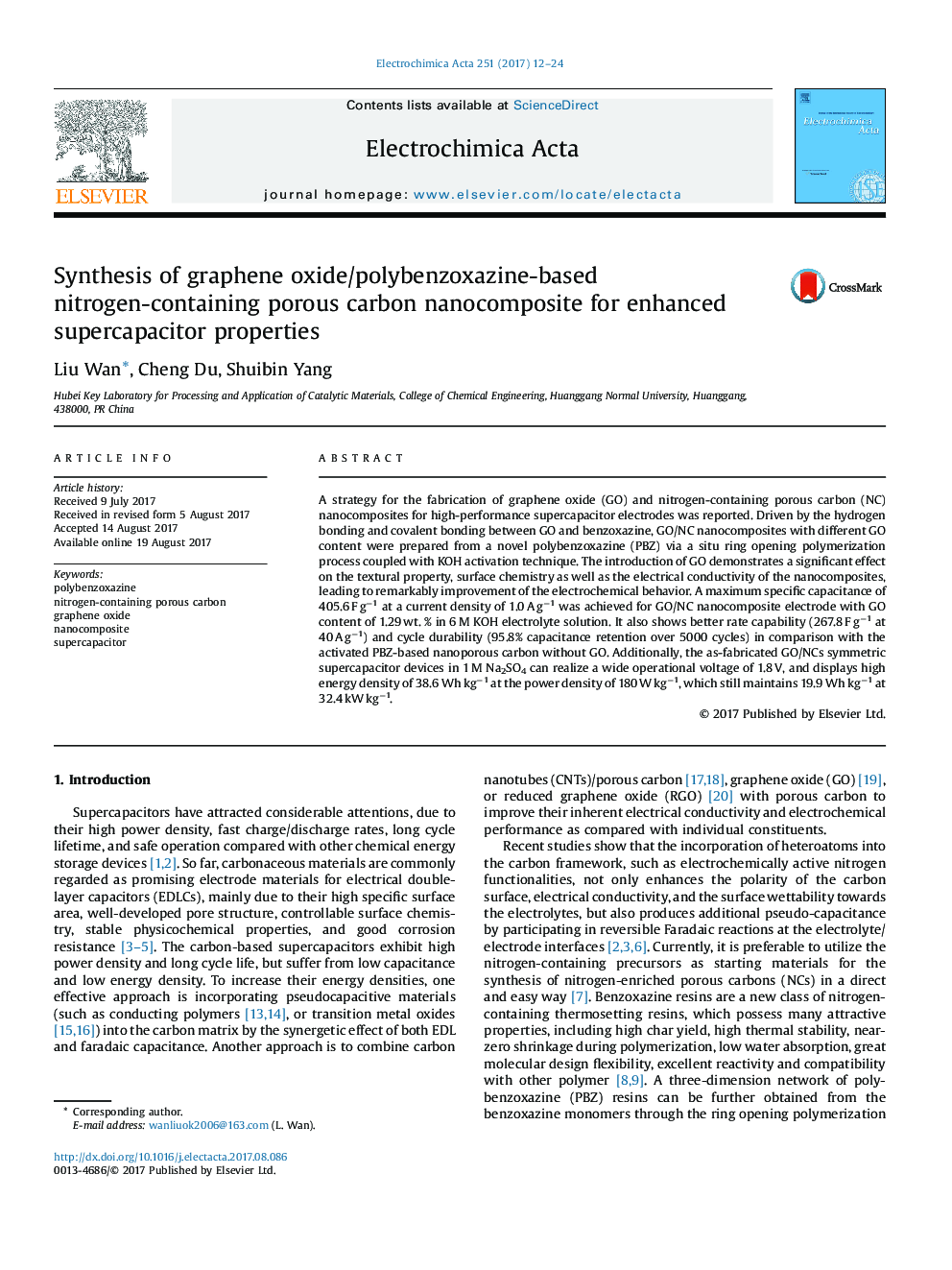| Article ID | Journal | Published Year | Pages | File Type |
|---|---|---|---|---|
| 6469861 | Electrochimica Acta | 2017 | 13 Pages |
â¢A novel synthesis of graphene oxide (GO)/nitrogen-containing porous carbon (NC) nanocomposites was reported.â¢GO/NCs have hierarchical porous structure, large surface area, and high electrical conductivity.â¢GO/NC electrode shows high capacitance, rate capability, and good cycle durability.
A strategy for the fabrication of graphene oxide (GO) and nitrogen-containing porous carbon (NC) nanocomposites for high-performance supercapacitor electrodes was reported. Driven by the hydrogen bonding and covalent bonding between GO and benzoxazine, GO/NC nanocomposites with different GO content were prepared from a novel polybenzoxazine (PBZ) via a situ ring opening polymerization process coupled with KOH activation technique. The introduction of GO demonstrates a significant effect on the textural property, surface chemistry as well as the electrical conductivity of the nanocomposites, leading to remarkably improvement of the electrochemical behavior. A maximum specific capacitance of 405.6Â FÂ gâ1 at a current density of 1.0Â AÂ gâ1 was achieved for GO/NC nanocomposite electrode with GO content of 1.29Â wt. % in 6Â M KOH electrolyte solution. It also shows better rate capability (267.8Â FÂ gâ1 at 40Â AÂ gâ1) and cycle durability (95.8% capacitance retention over 5000 cycles) in comparison with the activated PBZ-based nanoporous carbon without GO. Additionally, the as-fabricated GO/NCs symmetric supercapacitor devices in 1Â M Na2SO4 can realize a wide operational voltage of 1.8Â V, and displays high energy density of 38.6 Wh kgâ1 at the power density of 180Â WÂ kgâ1, which still maintains 19.9 Wh kgâ1 at 32.4Â kWÂ kgâ1.
Graphical abstractDownload high-res image (133KB)Download full-size image
